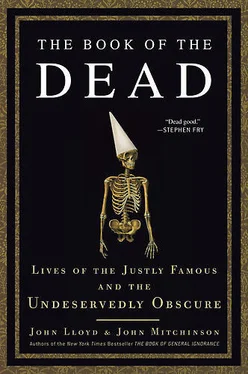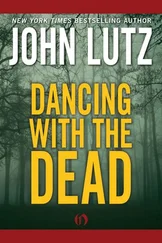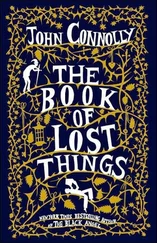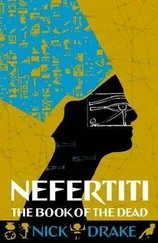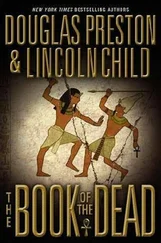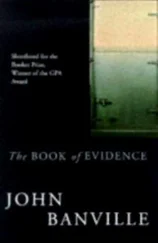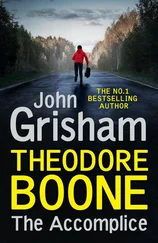How mad was Blake? It sounds as if he might have had bipolar disorder. He suffered from debilitating fits of gloom alternating with periods of visionary intensity and high productivity. At the age of four he saw God’s head leaning in at a window. As an eight-year-old, on Peckham Rye, he saw a tree full of angels. Blake’s images have a verve and simplicity that makes them feel both wild and oddly real. Today we think of him as imaginative rather than mad.
In The Marriage of Heaven and Hell , Blake dines with the Old Testament prophets Isaiah and Ezekiel. He asks them how they dare assert that God spoke to them. Isaiah answers that he “saw no God, nor heard any” but that he had perceived “the infinite in every thing.” The voice of God, continues the prophet, is nothing but “the voice of honest indignation.”
“Honest indignation” describes Blake to a tee. Short, stocky, and ginger, as a small child he had such a temper and hated rules so much that his father didn’t dare send him to school. Instead, William was educated at home by his mother and his own reading. “I have a great desire to know everything,” he once remarked. He had an exceptional gift for languages, teaching himself Latin, Greek, and Hebrew as well as some French and Italian. His natural intelligence (and his sudden insights) meant that he never felt intellectually intimidated by anyone. His scribbles in the margins of other people’s works are always lively and often very funny. Annotating the rather pompous Discourses of the great artist Sir Joshua Reynolds, Blake peppers the pages with exclamations like: “Villainy!” “A Fine Jumble!” “Liar!” but can be generous when he agrees with a passage: “Well Said Enough!” In one of his own notebooks, Blake suddenly goes off on a tangent about Jesus’ nose:
I always thought that Jesus Christ was a Snubby…. I should not have worship’d him if I had thought he had been one of those long spindle nosed rascals.
What really got Blake’s honest indignation going was injustice. No less than the Shakers, he was enraged by the class system, by slavery, and by the urban poverty he saw around him in London. The values of his society seemed to him to be upside down. What mattered in England was not
whether a man had talents & Genius, But whether he is Passive & Polite & a Virtuous Ass & Obedient to Noblemen’s Opinions in Art & Sciences. If he is, he is a Good Man. If not, he must be Starved.
Blake didn’t exactly starve, but he certainly struggled to make ends meet. His parents were both in the clothing trade—his mother’s first husband had died, leaving her a hosiery business in Soho, and Blake was born above the shop. He had no desire to join the family firm: He was “totally destitute of the dexterity of a London shopman.” When he was ten, his parents encouraged his natural love of sketching by sending him to a drawing school in the Strand, where he was nicknamed the “Little Connoisseur.” As a teenager, he spent hours drawing in Westminster Abbey (where he had more visions of Christ and the Apostles) and set out to be apprenticed as an engraver, a relatively humble profession at the time. While casting around for the right master, his stargazing skills came in handy. He turned down one position flat, declaring: “I do not like the man’s face, it looks as if he will live to be hanged.” Sure enough, twelve years later, the engraver, William Ryland, was hanged for forgery—the last person ever to be executed at Tyburn.
Blake showed great talent as an engraver and soon received a regular flow of commissions, particularly from booksellers wanting illustrations. By the mid-1780s he had earned enough money to buy his own press. But the business didn’t last long. Blake wasn’t really interested in money and he lived so much in his own head that deadlines were always a problem. He couldn’t bear his clients telling him what to do, and resented the shallow tastes of “Fashionable fools.” He refused to be pigeonholed: He didn’t care for the Romantic school’s obsession with landscape and was equally contemptuous of Neoclassical life drawing, which he described as “looking more like death, or smelling of mortality.” Blake had honed his technique by relentlessly copying the works of the Renaissance masters—Dürer, Michelangelo, and Raphael—but his subject matter came directly from his own luminous daydreams. For him, the visible world was just the outward “mortal” manifestation of an eternal reality. Where others saw the sun rising as “a round disk of fire somewhat like a Guinea,” Blake saw “an Innumerable company of the Heavenly host crying, ‘Holy, Holy, Holy, is the Lord God Almighty.’ ”
Wondrous as all this was, it wasn’t exactly commercial. He and his wife, Catherine, lived from job to job, subsidized by handouts from friends, for the whole of their married life. When Blake met Catherine (or Kate, as he always called her) in 1781, he was recovering from rejection by another woman and was vague and distracted. She, on the other hand, was instantly smitten—so much so that she fainted on being introduced to him, knowing instantly that this was the man she was meant to marry. They were wed within the year.
Catherine was illiterate: like Ann Lee, she signed her wedding contract with a cross. She ran the household and made Blake’s clothes; he taught her to read and write and she learned to help him with his engraving and coloring. They had no children, but it was a warm and happy marriage. In periods of financial hardship, she would put an empty plate in front of him at mealtimes as a hint, but she supported him through all his mood swings, missed deadlines, and aborted grand plans. In forty-five years, they spent less than a fortnight apart.
Not that there weren’t tensions. During some of Blake’s more fevered raptures, Catherine would sit up at night and keep him company; at others, she would leave him to it. In the long and painful gestation for the most ambitious of his prophetic books, Jerusalem (1820), she confessed to one of his fellow artists: “I have very little of Mr. Blake’s company; he is always in Paradise.”
There is a persistent rumor about Blake’s marriage that he tried to persuade Catherine to experiment with a more open relationship, perhaps through the introduction of a young unmarried woman as a sexual partner, and that she rejected this tearfully. A strong sexual element runs through all Blake’s work, and his nonconformist religious background may have instilled in him some radical ideas. London in the 1780s was home to a number of religious groups known as antinomians. The term means, literally, “lawless” and it was used—usually as a term of abuse—to describe extreme Protestants whose belief in “justification by faith alone” meant that they were supposedly able to ignore normal morality. His mother had been brought up as a Moravian, the oldest of the Protestant sects, founded in the late fourteenth century in the area of central Europe after which it was named. His father was a follower of Emmanuel Swedenborg (1688–1772), the Swedish scientist, theologian, and mystic. There is some evidence of open marriages being tolerated among both Moravians and Swedenborgians. The recent discovery and publication of Swedenborg’s Spiritual Diary has inflamed this further. Swedenborg—who was a Moravian for a while—practiced an intensely sexual mysticism. He had researched in detail the attainment of spiritual ecstasy by delaying orgasm, as practiced by some Kabbalistic Jewish sects and by the Tantric school of Buddhism.
How much Blake was aware of this we shall never know: The more pious-minded of his friends destroyed most of his explicitly erotic drawings and manuscripts after his death. What we do know is that Swedenborg’s best known work, Heaven and Hell (1758), was a major influence on Blake. One of Blake’s engravings shows a female figure whose vulva has been translated into an altar, with an erect penis standing like a holy statue at its center. This is a visual representation of Swedenborg’s idea of sex as a religious sacrament.
Читать дальше
